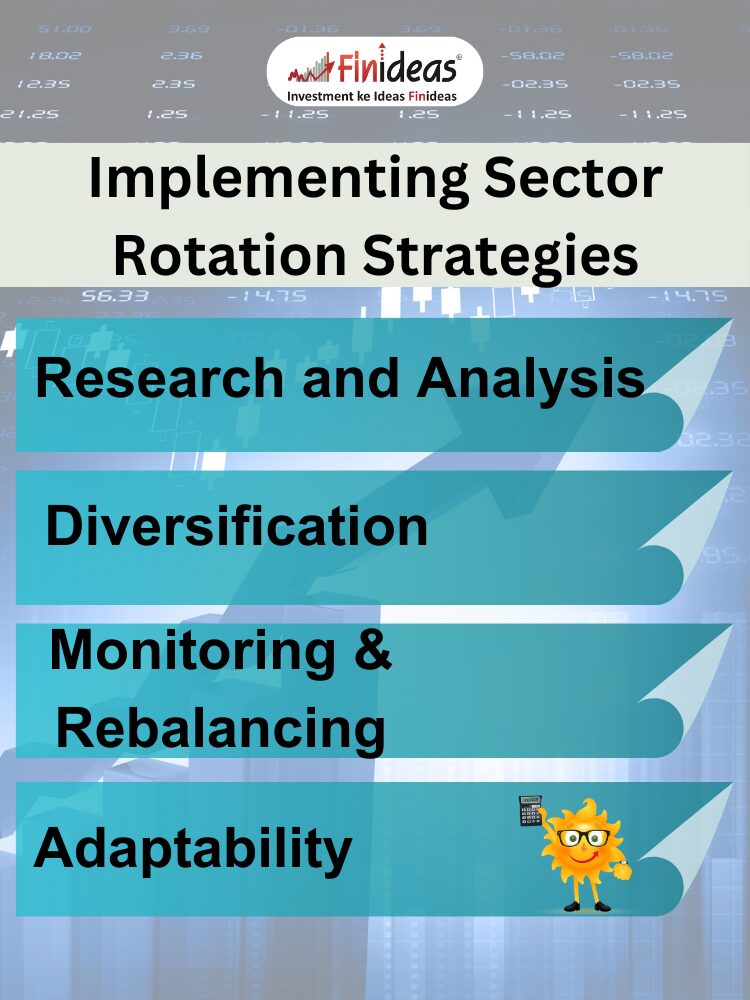Mastering Sector Rotation Strategies for Maximizing Market Trends in India
Introduction:
In the ever-fluctuating landscape of the Indian stock market, investors often find themselves seeking strategies that can help them navigate through the ups and downs effectively. One such strategy gaining popularity is sector rotation. Sector rotation involves strategically shifting investments among different sectors of the economy based on their performance in various market cycles. In this blog, we’ll delve into the intricacies of sector rotation strategies tailored for the Indian market, exploring how investors can capitalize on market trends for optimal returns.
Understanding Sector Rotation:
Sector rotation is founded on the premise that different sectors of the economy perform differently at different stages of the economic cycle. For instance, defensive sectors like healthcare and utilities tend to outperform during economic downturns, while cyclical sectors like consumer discretionary and industrials thrive during periods of economic expansion.
Identifying Market Trends in India:
Before diving into sector rotation, it’s crucial to identify prevailing market trends in India. This involves analyzing macroeconomic indicators, government policies, global market influences, and sector-specific factors impacting the Indian economy. Market trends can vary widely, ranging from bullish phases characterized by robust economic growth to bearish phases marked by economic slowdowns or downturns.
As current market trends you must know about Index Long Term Strategy to give you a better understanding of the market.
Implementing Sector Rotation Strategies:
Research and Analysis:
Conduct thorough research and analysis to identify sectors poised for growth based on economic indicators, industry trends, and company fundamentals. Tools such as fundamental analysis, technical analysis, and macroeconomic indicators can aid in this process.Diversification:
Diversify investments across multiple sectors to mitigate risks associated with sector-specific volatility. A well-diversified portfolio can help cushion against adverse movements in any single sector.Monitoring and Rebalancing:
Continuously monitor sector performance and economic trends to identify shifts in market dynamics. Rebalance the portfolio periodically by reallocating investments to sectors exhibiting strength and potential for growth while trimming exposure to underperforming sectors.Adaptability:
Remain adaptable to changing market conditions and adjust sector allocations accordingly. Flexibility is key to effectively capitalize on emerging opportunities and navigate through market uncertainties.
Case Study: Sector Rotation in India
Let’s consider a hypothetical scenario where India is experiencing a phase of economic expansion. During this bullish phase, sectors such as consumer discretionary, financials, and industrials are likely to outperform. Investors employing a sector rotation strategy would strategically allocate a higher proportion of their portfolio to these sectors to maximize returns.
Challenges and Considerations:
While sector rotation strategies offer the potential for higher returns, they come with inherent challenges and considerations. Timing the market, accurately predicting sector rotations, and managing transaction costs are some of the challenges investors may encounter. Additionally, staying disciplined and avoiding emotional decision-making are vital for successful implementation of sector rotation strategies.
What sectors do you believe are poised for growth in the current economic landscape of India, and why? Share your insights and perspectives on potential sector rotation opportunities in the Indian stock market.
Conclusion:
Sector rotation strategies serve as valuable tools for investors seeking to capitalize on market trends and maximize returns in the Indian stock market. By carefully analyzing economic indicators, monitoring sector performance, and maintaining a diversified portfolio, investors can navigate through market cycles effectively and achieve their investment objectives. While sector rotation requires diligence and patience, the potential rewards in terms of optimized returns make it a compelling strategy for investors in India’s dynamic market environment.
Happy Investing!
This article is for education purpose only. Kindly consult with your financial advisor before doing any kind of investment.


